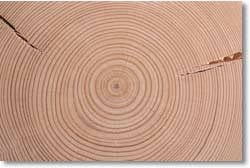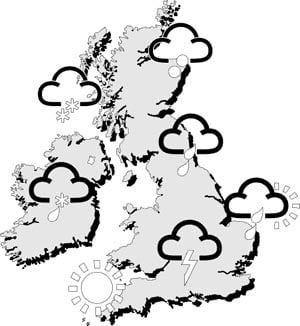Using weather data to record, interpret and predict the weather (Part 1)
Learning objectives:
- To be able to use secondary sources of information, including aerial photographs [for example the internet]
- To be able to analyze evidence and draw conclusions
- To be able to recognize and explain patterns made by the data leading to basic predictions
Resources:
• http://wow.metoffice.gov.uk/home
Outline of lesson:
1. Ask the class to work in pairs or threes to develop geographical adjectives for the weather in the past few days e.g. cold, freezing, foggy, and humid.
2. Brainstorm using snowball techniques the basic elements of the weather. This should include: precipitation (including snow, rain, hail and sleet), temperature, wind speed and direction and humidity. Clearly guidance will be needed and pupils are not expected to use the correct terms.
3. Ask the class to work in pairs and write or develop a one sentence statement describing the current weather.
4. Capture some of the sentences and write up so they can be seen.
5. Review with the class and identify what is lacking from the statements – for example numbers rather than words – degrees Celsius, mm of rain.
6. So if we are to give a good description of the weather we need to be able to quantify how hot or cold it is, how much it has rained, etc..
7. Use the web link http://wow.metoffice.gov.uk/home to go to the data home page. Use the filters to select ‘WOW sites’ and ‘official observations’.
Zoom in to find the data source nearest the school, click on it and then select ‘view full observation’ and then ‘table’.
You can then edit the start and finish dates to select the last month.
Pupils will then be able to choose which data sets they want to research. We would suggest ‘air temperature’ and ‘rainfall accumulation’ over the last month.
If the data is incomplete for that weather station, you will have to find another one which is close to the school.
8. Challenge the pupils to identify how they will sort the data into less information so they could accurately plot the information on a graph. They will need to reduce the time interval or time frame, design a secondary recording table and then import the data needed. It will be important that they collect sufficient headings to make a graph meaningful. This could be completed
using Excel, or as a table on a piece of paper.
9. By the end of the lesson each group should have created tables of data illustrating the weather over the past month.
10. Develop a set of age appropriate maths questions including all 4 number operations using the data. For example, questions might include ‘how much has it rained in the last week’, or ‘what is the difference between the temperature now and the temperature this time yesterday’.
Lesson title: Using weather data to record and interpret the weather.(Part 2)
Learning objectives:
- To be able to use secondary sources of information, including aerial photographs [for example the internet]
- To be able to analyse evidence and draw conclusions
- To be able to recognise and explain patterns made by the data leading to basic predictions
Resources:
1. Graph paper or Excel
2. Data from last lesson
3.Film https://youtu.be/fdErsR8_NaU
Outline of lesson:
1. Recap on the previous lesson by looking at the terms and the data collection exercise.
2. Use the video clip at https://youtu.be/fdErsR8_NaU to illustrate how important weather forecasts are and how they are made.
3. Explain that the challenge today is to develop a way of presenting the information in a way that you can ‘interpret’ and draw some idea about the connections in the weather.
4. Re-cap the key points about how graphs should be presented
5. Support the students in developing good quality graphs including Title, labelled axis with units and clearly plotted bars or lines as needed.
6. Once complete get the pupils to write a one sentence interpretation of each graph e.g. ‘over the last month the maximum temperature fell’ or ‘it is colder at night than during the day’, depending on which data they chose to represent.
7. From this statement the students could try and develop further statements using the weather station data from http://wow.metoffice.gov.uk/home. They should begin to hypothesise around what connections they may find for example, when it’s getting colder in one place, does it get colder in another place? Is it generally windier when its wetter? Does the maximum
temperature change as you’d expect with the seasons?.
Note: ongoing work can be undertaken producing monthly weather reports for the school from a local weather station. This could be developed for Gifted &Talented groups into basic forecasting e.g. can you see whether there is a link between pressure and rainfall.



